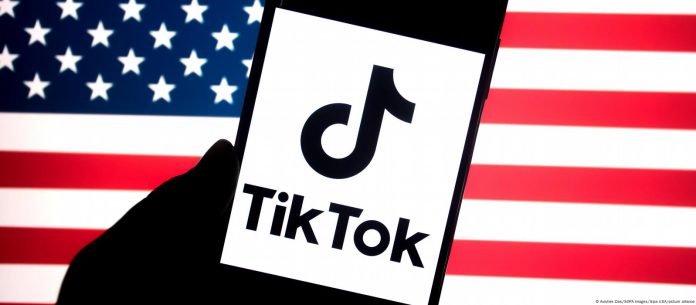The US Supreme Court will hear oral arguments over the future of TikTok on Friday; it is the latest installment in the long-running saga concerning whether or not to ban America’s immensely popular social media app, and pits national security against freedom of speech in a sort of battle of the titans involving the august justices of the Supreme Court.
Overview of the Legal Battle
TikTok and its Chinese-based parent company, ByteDance, asked the Supreme Court to review the case after a lower court ruled that a law prohibiting TikTok from operating in the US should remain in force last month. The ban is due to go into effect on January 19, unless ByteDance sells TikTok’s assets to a non-Chinese firm. ByteDance has the option to divest but stated in a legal filing that divestiture “is simply not feasible: not commercial, not technological, not legal.”
The oral arguments are expected to last two hours during which each side will be allotted time to present their cases. According to the court’s filing, both sides should be prepared to argue whether the ban infringes upon the First Amendment.
TikTok, which has 170 million users in the US, is half of the US population, and the thought of banning the app has surprisingly brought about rare solidarity among various groups. While they will laud this dictatorial call, it is none other than a bipartisan coalition of Congressmen who frame the activity by the Chinese Communist Party (CCP) as an act that could hardly be fended off.
On the other side are countless mediatized influencers, civil liberty groups, and more recently, Donald Trump-who first proposed banning TikTok almost five years ago. Now Trump and others say the banning of the app would equate to the denial of free speech of tens of millions of Americans.
Also read : Tesla Model 3 Vs. Tesla Model Y: Which Electric Car is Best for You?
What’s happening on Friday?
TikTok v. Merrick Garland will be an emergency hearing instituted by the Supreme Court whereby the Justice Department lawyers and TikTok’s legal team will argue. TikTok is expected to claim the statute in question creates unconstitutionality since it undermines the free speech exercised by millions of American citizens using the app. It is expected that the Justice Department will argue that the app poses a national security risk, enabling a foreign adversary to manipulate or collect data about Americans.
Will the decision determine whether TikTok is banned?
It might. A law passed by Congress and signed by President Biden in April set a Jan. 19 deadline for TikTok’s China-based owner, ByteDance, to divest itself of its U.S. operations or suffer a nationwide ban on the app.
Legal experts say it is possible the court could decide to postpone Jan. 19 from going into effect to allow for the justices to consider and rule.
If the Supreme Court goes along with the lower federal appeals court that supported the law last month, the process of TikTok being banned in the U.S. could commence.
If the justices strike down the law as unconstitutional, there is no Jan. 19 deadline, and it will be business as usual for the hit video app.
Another potential outcome could find the Supreme Court locating fault with the rationale relied upon by the lower court in getting to its decision in favor of the law.
What are the arguments for and against taking action against TikTok?
The Justice Department says China-based ownership of TikTok could manipulate U.S. citizens’ data and social commentary from Beijing behind the scenes.
TikTok appeals to the Supreme Court
In a court filing dated December 9, TikTok threatened that without intervention by the Supreme Court, the law would take effect on January 19, leading to the possible shutdown of one of America’s most popular communications platforms for its 170 million-plus monthly users.
Significantly, this also comes on the eve of the presidential inauguration.
Trump’s call for a political resolution
President-elect Donald Trump has moved to the Supreme Court, making an appeal requesting more time so that his new administration can bring a “political resolution.”
For the first time, he departed from his earlier support for the ban.
It’s unclear whether or not the court will consider such views, considering this is somewhat of an attempt to influence the case.
Also read : Clara Brown Net Worth: From Slavery to Wealth and Philanthropy
TikTok’s possible alternatives to avoid ban
Experts have proposed a few ways TikTok can sidestep an outright ban without going to the Supreme Court.
These include actions from Trump in office, asking the Justice Department not to enforce the law or prosecute tech companies hosting TikTok on their app stores.
Trump can further delay the law by 90 days post-January 19 should he be able to prove “evidence of significant progress” toward a divestiture.
Impact of law on TikTok’s accessibility
If the law is enforced, TikTok won’t be uninstalled from users’ phones. However, people will not have the option of updating the application, and those without it won’t be able to download it.
Over time, it may have an enormous impact on user experience and the functionality of the app.
The Biden administration’s stance on TikTok
The Biden administration has defended the law as it posits that China’s control of TikTok through ByteDance is one of the great national security threats.
They propose that Chinese authorities might force ByteDance to share information with US users or manipulate the platform to control information.
TikTok, however, puts the claims against it by saying nothing is proving China has been attempting such actions.
What are everyday users thinking of the Supreme Court case?
Many videos that have gone viral on TikTok make a pitch to use a VPN, which provides users with ways to bypass any potential ban.
TikTok creators are readying themselves for this app to likely be shut down in the United States this month unless it gets sold to a non-Chinese company.
Also read : Tesla Model Y Juniper: Future of Electric SUVs
Here’s how TikTok creators are preparing for a TikTok ban
As for others of the app’s creators, some are urging users to harden their pillows across competing video services like YouTube Shorts and Instagram Reels, further hedging against TikTok cratering in the United States.








